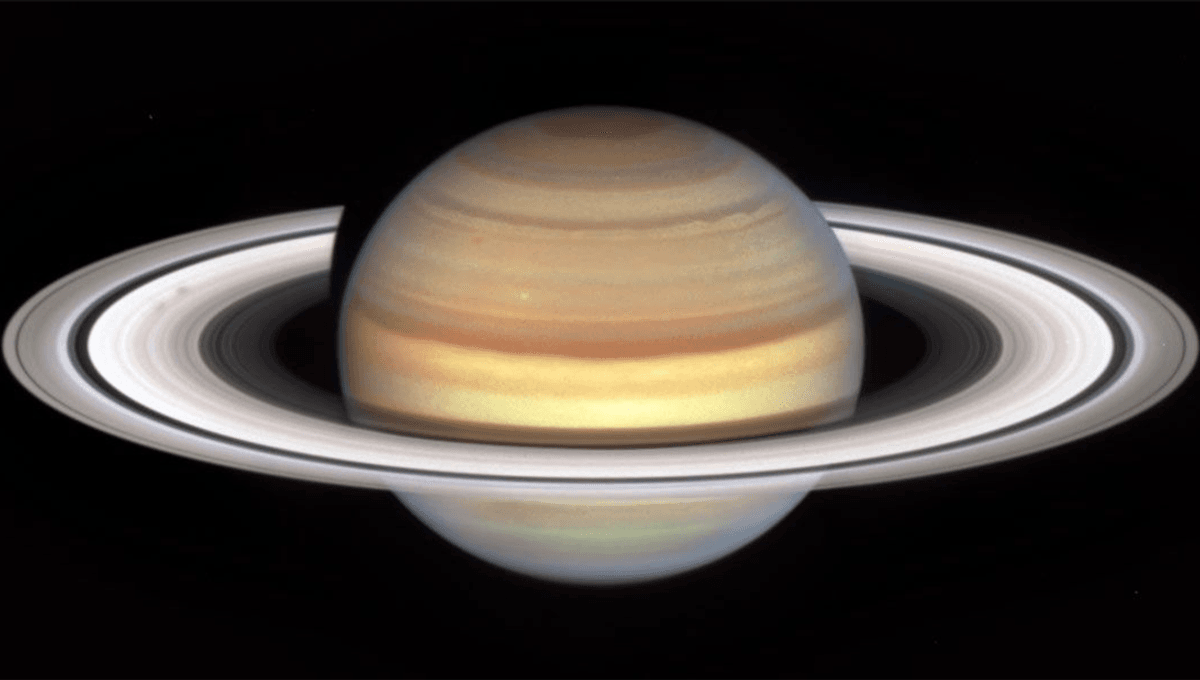-
Feed de Notícias
- EXPLORAR
-
Páginas
-
Blogs
-
Fóruns
"The Rings Held The Answer": How We Finally Figured Out Saturn's Day Length In 2019

"The Rings Held The Answer": How We Finally Figured Out Saturn's Day Length In 2019
Figuring out the day length of Earth is more complicated than you might imagine. While on average a day is 24 hours long, throughout the year the planet's rotation can speed up and slow down, with one of the biggest factors being the drag caused by the Moon as it gets closer and further away from Earth.
But by measuring the positions of bodies in the sky, and more recently through the use of atomic clocks, we have a very precise measurement of the Earth's day length, and when it varies from it. For a solar day, or the time it takes for the planet to spin so that the Sun appears in the same position in the sky, this is about 24 hours on average. For a sidereal day, or the time it takes for the planet to spin so that the distant stars in the sky appear the same, it is 23 hours 56 minutes and 4 seconds. Other planets and bodies in the Solar System are less easy to pin down. The first obvious problem is that they are far away, making precise observations difficult. But a more difficult challenge is that, like the gas giants Jupiter and Saturn, they may not have a solid surface with permanent features to use as a reference point as the planet rotates. Without this, you cannot simply observe a feature and time how long it takes for that feature to once again be pointing in the same direction (relative to the Sun or distant stars). Scientists have come up with some pretty clever alternative methods for figuring out a planet's day length. Jupiter, for example, has a magnetic field that does not align with its rotational axis, moving around as the planet rotates. By measuring periodic radio signals that repeat every day, astronomers pinned down that the planet has a day length of 9.9 hours. Unfortunately, Saturn is trickier still, with its magnetic field being nearly perfectly aligned with its rotational axis. But scientists weren't out of ideas yet. In 2019, a graduate student in astronomy and astrophysics at UC Santa Cruz, Christopher Mankovich, used data from the Cassini spacecraft to finally pin down its day length. Earlier research had found that the rings of Saturn respond to vibrations within the planet. Saturn's interior vibrates at frequencies that cause slight variations in its gravitational field, and the ice and dust making up Saturn's rings are affected by it. "Particles throughout the rings can't help but feel these oscillations in the gravity field," Mankovich said in a NASA statement. "At specific locations in the rings these oscillations catch ring particles at just the right time in their orbits to gradually build up energy, and that energy gets carried away as an observable wave." In a paper, Mankovich's team modeled the internal structure of Saturn, which would produce the observed waves in Saturn's rings. This allowed him to track the interior of the planet over time, producing the gas giant's day length at 10:33:38. This was significantly faster than estimated by looking at the Voyager spacecraft, which estimated 10:39:23 based on magnetic field data, and other Cassini data, which ranged from 10:36 to 10:48. "The researchers used waves in the rings to peer into Saturn's interior, and out popped this long-sought, fundamental characteristic of the planet. And it's a really solid result," Cassini Project Scientist Linda Spilker added. "The rings held the answer." Unfortunately, Cassini's mission ended in 2017, but not before it sent back data from the daring "grand finale", and several last images to boot. The study is published in The Astrophysical Journal.


